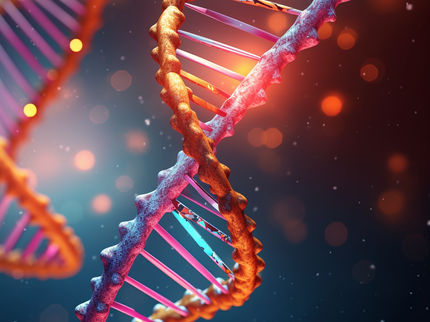Giant clams offer clues to improve solar cells & color displays
Nature’s surprising method for creating white coloration could yield bio-inspired innovations
Researchers from the University of California, Santa Barbara have discovered that some species of giant clams produce their white coloration much like the displays used in televisions and smartphones do – by combining red, green and blue light.
The new findings could help improve solar cell efficiency and offer a bio-inspired route to a new type of color displays.
Using nature to improve solar cells
Giant clams are native to coral reefs of the Pacific and Indian Oceans and can live up to 100 years in the wild. Despite living in nutrient-poor water, they can grow up to 47 inches long thanks to symbiotic photosynthetic algae living inside the clam’s shell. In this mutually beneficial relationship, the clams take in carbohydrates produced by photosynthesis while the clam’s nitrogen-rich waste provides nutrients to the algae.
The focus of the new study lies at the interface between the clams and their algal partners, in a collection of iridescent cells clams produce just inside the edge of their shells. These cells create a dazzling array of colors including blues, greens, golds and, more rarely, white.
“We are studying the clams to see how their iridescent cells interact with the algae to enhance photosynthesis,” said Amitabh Ghoshal, a postdoctoral fellow, University of California, Santa Barbara, California, USA, and the study’s first author. “Like solar cells, photosynthesis involves converting light into energy. As we expand our understanding of the clam’s system for light collection, we can take the lessons from it to create solar cells that more efficiently convert light to energy.”
The research team is systematically studying each color produced by the clams to gain a detailed understanding of the biological significance and mechanisms involved in producing the color. To study the somewhat rare white coloration, the researchers purchased live Tridacna maxima and Tridacna derasa clams that were either farm-raised or responsibly harvested.
The researchers were surprised to find that the two species of giant clams used different methods for mixing colors to produce white. White in the Tridacna maxima clam comes from tight clusters of differently colored iridescent cells while Tridacna derasa has multicolored individual cells that appear white on a macroscopic scale.
“As far as we know, there is no reason or advantage to having differently colored separate cells compared to individual cells with multiple colors in them,” said Ghoshal. “It is possible that one species has the genetic tools for one configuration, and the other species has the tools to make the other configuration but we don’t know that yet.”
Potential for reflective color displays
Although accomplished in different ways, both clam species create white by mixing clusters of colors much like the electronic displays found in televisions, smartphones and electronic billboards mix red, blue, and green pixels to make white. However, most of today’s displays must generate light using LEDs or another light source while the clams require only sunlight. The clam’s iridescent cells contain tiny multi-layer structures of proteins that act like mirrors to reflect various wavelengths of light to produce the colors.
“If we could create and control structures similar to those that generate color in the clams, it might be possible to build color-reflective displays that work with ambient light sources such as sunlight or normal indoor lighting,” said Ghoshal. “Producing color the way giant clams do could lead to smartphone, tablet and TV screens that use less power and are easier on the eyes.”
Highly localized analysis
The researchers studied the clams using a combination of microscopy and spectroscopy techniques to precisely measure the color and amount of reflected light coming from individual cells. With this information, they could figure out whether a region of a clam that appeared bright white, for example, resulted from a few highly reflective cells or a great number of less reflective cells. To accomplish spectroscopic analysis at cellular and subcellular scales, the researchers used a high-resolution microspectrophotometer, which they constructed for their previous study of reflective structures in squid skin cells.
“It is difficult to acquire individual spectra from a small cell that shows multiple reflective colors,” said Ghoshal. “It took a lot of patience and trying different things.”
The researchers are now trying to build solar cells with structures similar to those found in the clams to see whether it might be possible to increase the efficiency of synthetic solar cells. “If we could use what we learned from the clams to build a very efficient distributed light-gathering system, then we could use that to make more efficient, 3-dimensional solar cells that require less area than our present roof-top and land-based solar farms,” said Ghoshal.
Original publication
Other news from the department science
Most read news
More news from our other portals
See the theme worlds for related content
Topic World Spectroscopy
Investigation with spectroscopy gives us unique insights into the composition and structure of materials. From UV-Vis spectroscopy to infrared and Raman spectroscopy to fluorescence and atomic absorption spectroscopy, spectroscopy offers us a wide range of analytical techniques to precisely characterize substances. Immerse yourself in the fascinating world of spectroscopy!

Topic World Spectroscopy
Investigation with spectroscopy gives us unique insights into the composition and structure of materials. From UV-Vis spectroscopy to infrared and Raman spectroscopy to fluorescence and atomic absorption spectroscopy, spectroscopy offers us a wide range of analytical techniques to precisely characterize substances. Immerse yourself in the fascinating world of spectroscopy!























































